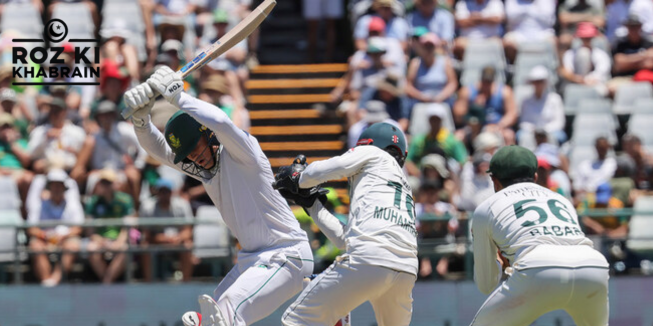South Africa enforced the follow-on after dismissing Pakistan for 194, taking a commanding first-innings lead of 421 runs on day three of the second and final test at Newlands on Sunday.
Pakistan’s batting crumbled after a 98-run fourth-wicket partnership between Babar Azam (58) and Mohammad Rizwan (46). The stand was broken by 18-year-old debutant Kwena Maphaka, who claimed Babar’s wicket five balls after the morning drinks break when Babar was caught behind by Kyle Verreynne, glancing the ball down the leg side.
Pakistan was already a batter short after opener Saim Ayub fractured his ankle while fielding on the opening day and could not continue in the game.
Maphaka (1-43) celebrated wildly after taking Babar’s prized scalp, marking his first-ever Test wicket and making history as South Africa’s youngest Test player, succeeding former spinner Paul Adams.
Rizwan, having made 46, made a poor decision to charge at seamer Wiaan Mulder, and was the second wicket to fall, playing the ball onto his own stumps with a wild swipe.
Salman Agha added 19 before becoming the third man out, stumped by Verreynne off the bowling of spinner Keshav Maharaj.
South Africa posted a massive total of 615 in their first innings, with centuries from Ryan Rickelton (259), Temba Bavuma (106), and Verreynne (100).
South Africa has already secured their spot in the World Test Championship final against Australia in June, set to be held at Lord’s from June 11-15. The team is now aiming to win the series 2-0 after their narrow two-wicket victory in the first Test in Pretoria.
What Is the Follow-On Rule?
The follow-on rule is only applicable in Test cricket. It comes into play when the team batting second fails to reduce the deficit between their score and that of the opposing team to under 200 runs. In such a scenario, the team with the higher score has the option to request the other team to bat again.




